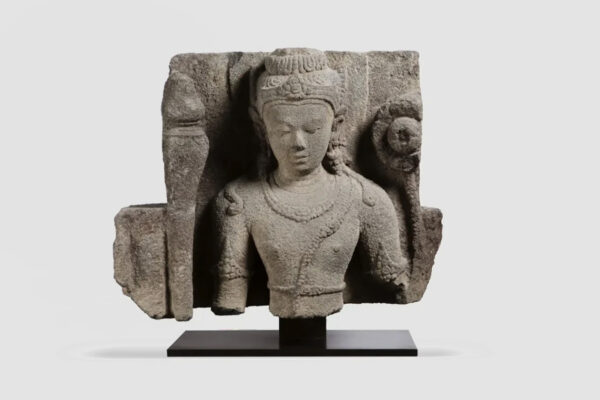Coral estimate
Do you own an Asian coral object and want to know its value? Whether you’re a passionate collector or have a family heirloom, having your coral appraised is an essential step in understanding its true potential. Our Asian art experts will provide you with a free, confidential appraisal within 48 hours, assisting you in every step of the way, whether you wish to sell at auction or simply find out the value of your piece.
Estimates and prices for Asian corals
Asian corals, particularly those of Chinese origin, have a rich history dating back over 3,000 years. Originally used in ritual and ceremonial contexts, these objects are now highly prized on the art market. Here’s a detailed guide to understanding the value of these pieces and how to recognize them.
Asian coral price chart
| Category | Origin / Period | Price Low (€) | Mid-range (€) | Exceptional (€) |
|---|---|---|---|---|
| Small Objects and Bottles Snuffboxes in Coral | China, 20th century | 80 – 300 | 400 – 1 000 | 1 000 – 2 500 |
| Enamelled objects Coral Red | China, 19th – 20th century | 130 – 500 | 600 – 1 500 | 5000 – 10000 |
| Carved Coral Subjects (People, Animals) | China, 20th century | 200 – 1 000 | 1 200 – 3 000 | 50 000 – 100 000 |
| Red Coral Groups with Intricate Details (Divinities, Mythological Scenes) | China, 20th century | 3 000 – 6 000 | 10 000 – 20 000 | 30 000 – 60 000 |
| Large Red Coral Sculptures (Goddess, Phoenix, etc.) | China, Early 20th century | 5 000 – 10 000 | 15 000 – 30 000 | 50 000 – 130 000 |
| Coral Jewelry and Accessories (Pendants, Magnifying Glass with Gold Mount) | Italy or China, 16th – 19th century | 400 – 1 500 | 2 000 – 5 000 | Up to $10,000 |
Why should I have my Asian coral object appraised?
If you own an Asian coral object and would like to know its value, you have several options for obtaining a reliable estimate:
Getting an accurate estimate of your jade has several advantages:
For an auction: If you’re thinking of selling your coral, knowing its current value helps you set a fair and attractive price.
For insurance: In the event of a claim or damage, an estimate enables you to insure your room properly.
As part of an inheritance: If you have inherited a coral object, you may need an appraisal for inheritance tax purposes or to divide the inheritance fairly.
Curiosity: You may simply want to know the value of your coral, especially if it’s an heirloom or family heirloom.

How to get your coral appraised with Asium?
Nothing could be simpler! You can request an estimate directly online via our form. Simply upload photos of your coral object and add a description. Our experts will get back to you within 48 hours with a confidential estimate.
For larger collections or high-value objects, we also offer in-home appraisal services or the possibility of attending our appraisal days, where you can bring your coral for an in-person appraisal.
How to recognize an Asian coral object?
It can be difficult to recognize genuine Asian coral, but here are a few criteria to consider:
- Patina and wear: Antique coral has a slightly matte patina due to age. Antique Asian sculptures are often mounted on wooden or gemstone bases.
- Natural veins: Asian coral often features small, visible natural veins or striations, especially on red and pink corals. These lines indicate an organic structure and differentiate natural coral from synthetic materials.
- Sound resonance: When a coral piece is gently struck with another hard object, it produces a soft, non-metallic sound. This particular resonance is a distinguishing feature compared with glass or plastic imitations.
- Weight: Coral is dense and relatively heavy. Compared with synthetic materials, it will have a certain weight, often indicating good quality.
- Expert advice: To avoid counterfeits, it’s always best to call in a specialist to confirm the authenticity of your coral.
How do you assess the value of your coral?
When you hold your Asian coral, there are several criteria that can help you determine its value. Here’s a detailed guide to help you value your item accurately:
The color
Asian coral, particularly from China and Japan, is often deep red or pink in color. Red coral” is particularly prized in China, where it symbolizes luck and prosperity. The shade should be uniform, but a natural gradation (lighter at the base, darker at the ends) is a good sign of authenticity.
Texture and surface
To the touch, genuine Asian coral is smooth and may have a slight porosity visible under a magnifying glass, as it is an organic material. It is also possible to distinguish a natural texture, unlike synthetic coral, which often appears too homogeneous. Striations or small internal lines may indicate natural coral.
Verification test
To be sure, a heat test (performed by a professional) can help: by heating a needle and placing it gently on a small hidden area, a smell of burnt calcium (similar to shellfish) is a positive indicator, while a smell of plastic would indicate synthetic material.

A brief history of Asian coral
Asian coral, particularly red coral, has a rich history in Asian art and culture. As early as the Tang dynasty in China (618-907), red coral was prized for its vivid color and rarity. It was used to make jewelry, amulets and decorative objects. Its red color, a symbol of good luck and protection in Chinese culture, makes it a sought-after material for ritual and ceremonial objects. Coral was often carved to represent Buddhist deities or mythological animals, reinforcing its spiritual symbolism.
Under the Ming and Qing dynasties, Asian maritime trade intensified, and Asian coral was traded with other regions, notably Europe, where it was valued just as highly. Chinese craftsmen, renowned for their mastery of sculpture, created objects in coral of great finesse, ranging from small jewels to complex statuettes. These pieces became symbols of high social status and were prized by members of the imperial court. Japan, during the Edo period (1603-1868), also valued coral, notably in samurai ornaments and netsuke, small decorative sculptures.
Today, antique Asian coral is highly sought-after on the art market. However, due to its rarity and marine species protection laws, the coral trade is now highly regulated. Collectors and experts appreciate these objects for their aesthetic and historical value, while their rarity makes them all the more precious.
Our experts in coral
-

TaHsi CHANG
Specialist in the arts of VIETNAM and CHINA
-

Eunbi HA
-

Sophie LEGRAND
Auctioneer
Our areas of expertise
Your questions, our answers
What types of objects are suitable for Asian coral?
Coral objects can be found in the form of statues, sculptures, jewelry, vases and pots in Asian art.
What are the prices for my Asian coral object?
Prices vary according to the type and age of the coral, ranging from €50 to €60,000.
Are there any fakes of coral objects?
Yes, coral was very popular in the 20th century, and imitations were created. While some imitations are crude, others are difficult to appraise.
Previously appraised by Asium
The Asium estimation service is...

Simple
and free
A few photos of your work, a few words of description and you're all set !

Fast
but not too fast
Our experts are serious, they take the time to research and get back to you within a week.

Reliable
and confidential
Our auctioneers are the Sherlock Holmes of the art market.































